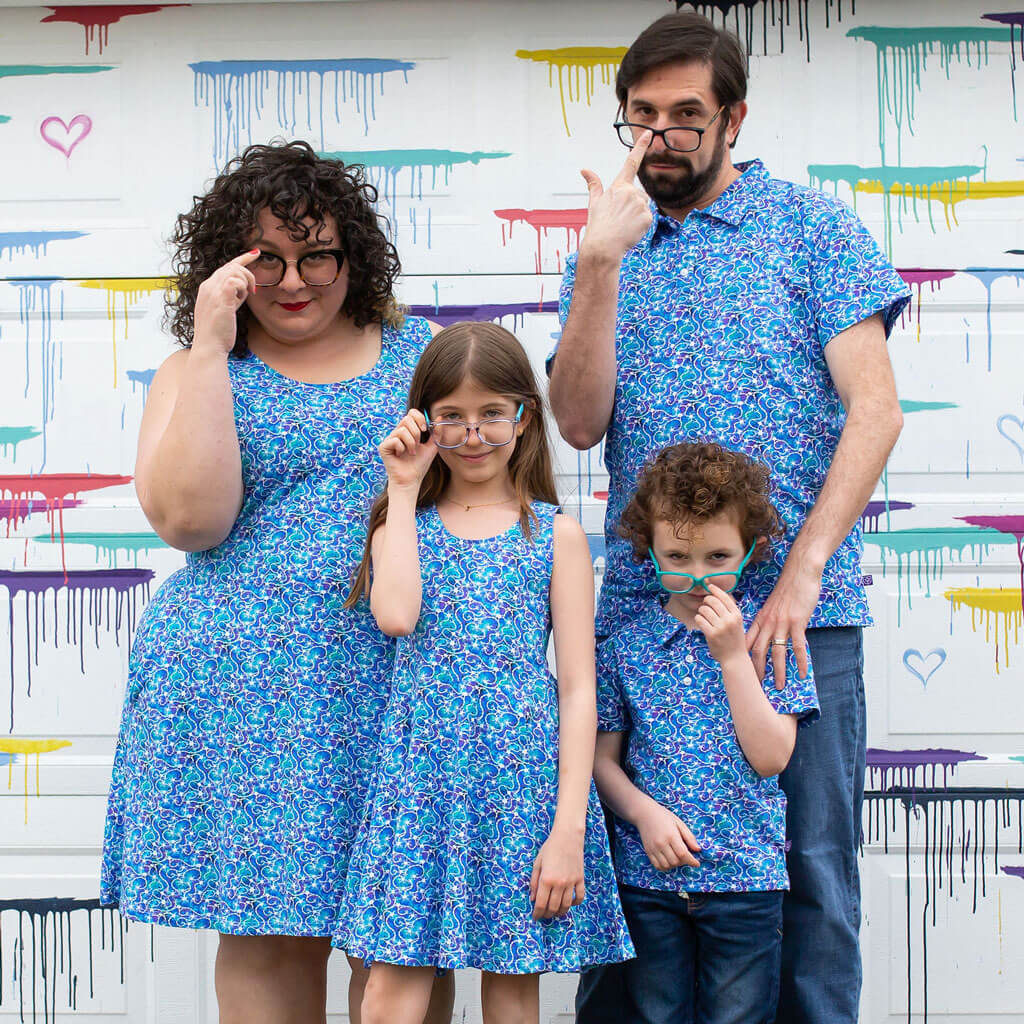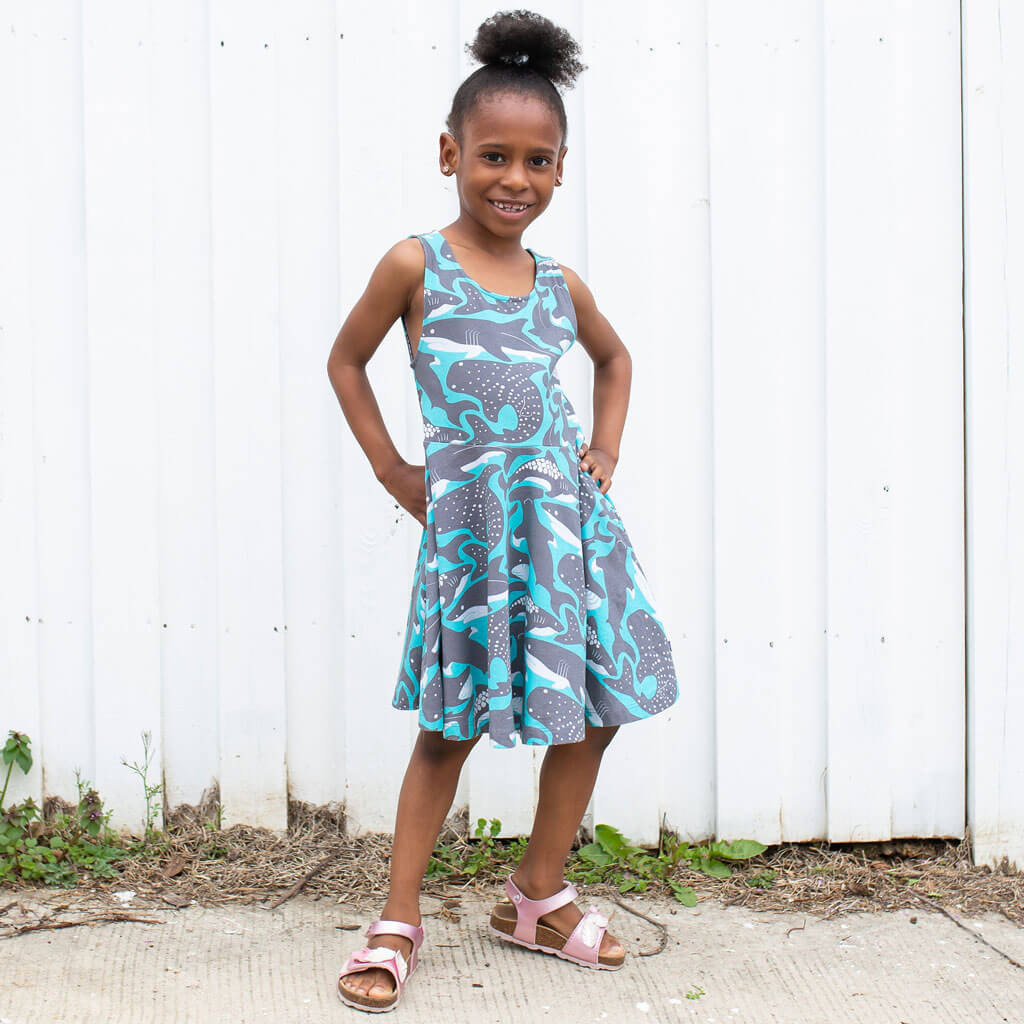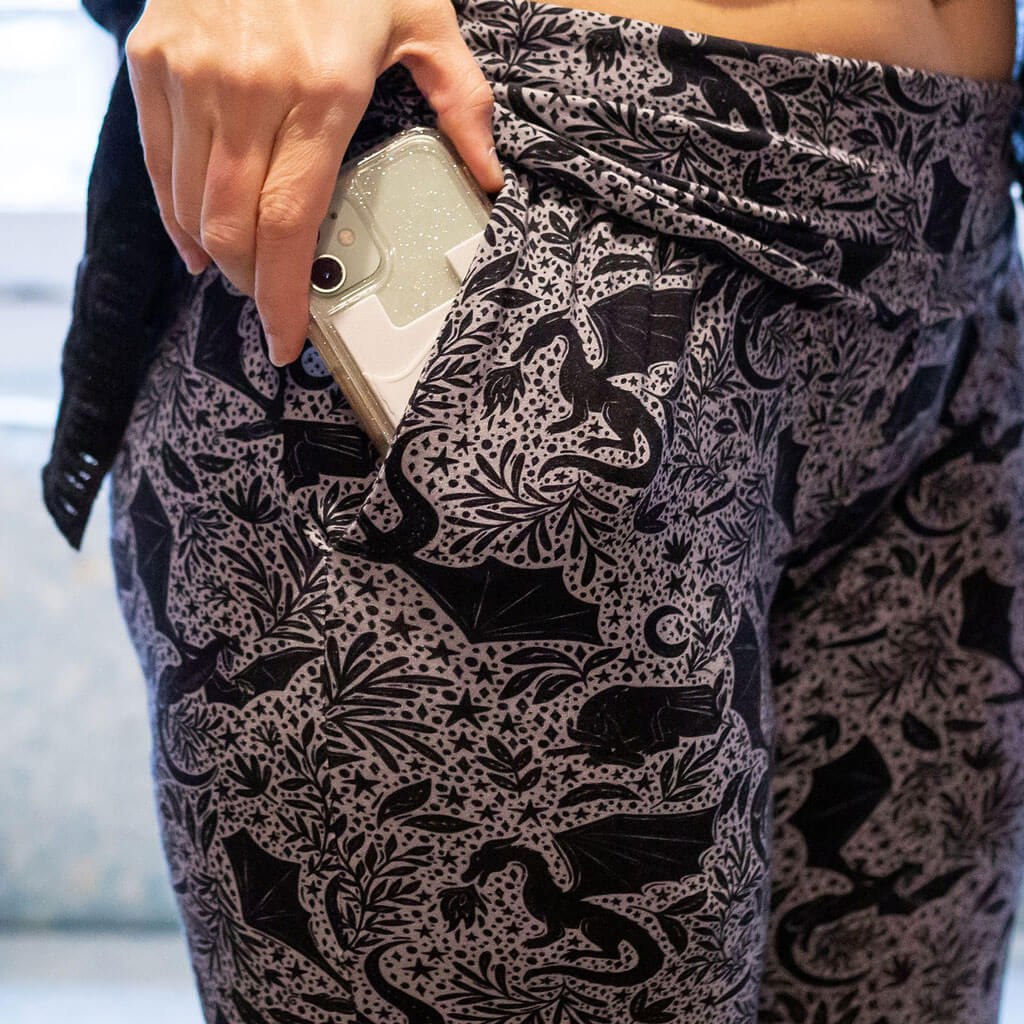Free US Shipping on orders over $100.
Free US Shipping on orders over $100.
Shop Now
Sale
13,230 Digits of Pi
August 12, 2021 4 min read 4 Comments
[UPDATE: This project is finished! The Pi Digits Collection debuts in January 2022.]
So, I need your help. Will you proofread my Pi fabric to make sure I got all the digits right, and in the right order?
What, Why, How
I had this “brilliant” idea to create a Pi design that would feature as many handwritten digits as I could fit into the maximum size rotary screen textile printer (64” by 64”). I had figured each number would be about 3” tall, so I would be able to fit about 1000 of them, nicely spaced, on the fabric.

But the mockup on the size 6 dress showed that 3” numerals were way too big. I could only fit about 8 rows of digits on the size 6, which meant the size 2T would have about 3 rows. There was also way too much white space. No good.

In fact, even 1.5” numerals were still too big! So I reduced them to about .75” and tightened the spacing, and it finally looked right. However, this meant that instead of about 1000 digits of pi, I would need more than 10,000. That’s ok, I thought (naively). How much work could it be to write out 10,000 digits?
Undaunted, I used my computer’s screen reader program to have the the digits read aloud to me while I wrote them longhand on plain white paper with a red sharpie. I had to reduce the reader’s speed to 10% so that I could follow the voice accurately. It sounded pretty funny:
Then I digitized the writing by taking photos of the sheets and converting them to vector art in Illustrator.


And then I started arranging them in (sort of) neat rows, and then pulling each number set (all the 1’s, all the 2’s etc) onto their own separate layers to colorize them. I also discovered that (not surprisingly) as I wrote, my handwriting changed size and shape, so I had to resize some of it to make it fit properly in rows.

Out of habit, I also turn the pen every so often, something I have always done when writing with a pencil to keep the tip sharp. I do it with every stylus I use (even, pointlessly, my Apple Pencil). Anyway, it meant that some numbers came out fat and some came out skinny.

The good news was that this was exactly the kind of look that I wanted the art to have - most of the numbers looked unique and it did look like someone had sat there writing out the digits of pi by hand (because I had!) with different colored sharpies.
The bad news was that it took me 5 hours to do 3 lines - 1.5” out of 64”.
Clearly this was not going to work. If I wanted to finish this art by Christmas, or by the actual deadline (September 1), I was going to have to use another method.
When I was in college, I studied the paleography of medieval manuscripts and started working with the Richard Rufus Project. Professor Wood taught me to read Latin philosophical texts and to assist in collating the works (reading the manuscripts and comparing them to the critical edition she was preparing). I learned that every scribe’s writing contains multiple ways of forming the same letters, but after a while you learn to read “the hand.” There are only so many ways of writing the letter p, or even its variations when used for abbreviations for words such as pro, per, propter etc.

I had already written 1000 digits. Since Pi has a fairly even distribution of numbers (between 90-110 of each numeral in the first 1000 digits), I had about 100 different examples of each numeral in my handwriting, and I figured that was enough for a representative sample.
So instead of continuing to write, I copied the numerals I already had. Then I visited 1 Million Digits of Pi, copied the next ~14,000 digits into Notepad, divided them into groups of 5, and printed out 20 pages of digits. And then I painstakingly rearranged the digits into the correct order, all the way through to digit #13230 (it’s a 7).

This went much faster than the handwriting method, but it still took me another 15 hours to finish.
As I worked, I enjoyed finding little familiarities, like zip codes and famous number sequences (24601!), and I marveled that my own zip code never came up - in fact, very few sequences of more than 4 numbers repeated. I particularly loved the funny section with six 9's in a row. And I thought often about the scale of what I was working on. My mind could barely comprehend thousandths - just the first three digits of Pi - 3.141. By the time I finished, the enormity (minisculity?) of the number I was copying gave me a new appreciation for Pi, its mystery, its profundity (life, the universe, and everything!).

Will you join me in marveling at Pi, and helping me to make sure I copied it over correctly? There is just no way that I did this completely perfectly. I am a human being and I am sure I made some mistakes, probably during the hours when I was listening to my Civil War Podcast, or when my teenage son was reading the groups of numbers to me while also playing Clash Royale on his phone. Medieval scribes made all kinds of errors, from skipped words (leaving out non is a really big mistake!) to homeotelutons, and I’m sure I did the same.
So will you be my super duper awesome hero, and volunteer to check a few lines for me? I will give you 30% off your next Princess Awesome purchase and my eternal gratitude, and you will be part of what I assume to be the first time this many digits of pi has ever been printed on a textile design.
Thank you so much!!
4 Responses
Deb H.
August 12, 2021
Yesssss! This is the kind of pi dress I’ve been longing for; one that really celebrates the magnitude and mystery and wonder of the number. +1 to RL’s idea that you should sell the fabric! I signed up to help.
Tracey Miller
August 12, 2021
I loved getting a glimpse into what goes into your designs! Thank you for sharing that! I’m having back surgery soon, sending my son off to college, dealing with aging parents, and preparing for the new school year, so I am not volunteering for this project. However, let me know if you need help in the future!
RL
August 12, 2021
Will you sell the fabric? It would make nice curtains for my classroom shelves.
Leave a comment
Comments will be approved before showing up.
Subscribe
Sign up to get the latest on sales, new releases and more …
Are you sure you want to redeem reward?
Are you sure you want to redeem reward?








Rich K
August 12, 2021
Any way to get the full, hi-res version of this? Shouldn’t be too hard to verify things with OCR